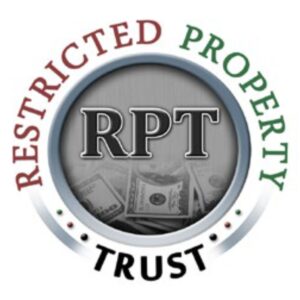Navigating Financial Safeguards: A Guide to Understanding Restricted Property Trusts
Navigating Financial Safeguards: A Guide to Understanding Restricted Property Trusts
Blog Article

In the realm of asset protection and wealth management, Restricted Property Trusts (RPTs) can be seen as a valuable instrument to protect and optimize your financial security. Although not as well-known than other instruments for financial planning, Restricted Property Trust offer distinct advantages in securing wealth and improving the strategies for estate planning.
Understanding Restricted Property Trusts
The Restricted Property Trust is a special type of trust that is designed to guard and manage assets by imposing specific restrictions imposed on their use or transfer. In general they are used to hold important assets including businesses or real estate and are aimed at attaining long-term financial security.
Key Features of RPTs
1. Asset Protection Asset Protection: One of the greatest benefits of RPTs is the ability to protect assets from legal and financial claims. By placing property into an RPT, people can be sure the security of their property insulated from possible lawsuits or financial dispute.
2. Tax Benefits: RPTs can provide valuable tax benefits. Contributions to the trust may be tax-deductible and the trust may benefit from tax advantages on income generated from the trust's assets. This can result in significant tax savings over time.
3. Estate Planning: RPTs are a valuable tool for estate planning. They permit people to transfer their assets to beneficiaries while maintaining control over the manner and time these funds are dispersed. This could help to in avoiding probate and reducing taxes on estates.
4. Flexibility: Despite the restrictions, RPTs offer a degree of flexibility with regards to how assets are managed and distributed. Trustees can be given specific instructions on how to manage the property, making sure that the property is in line with the individual's financial goals as well as legacy plans.
Implementing an RPT
Establishing an Restricted Property Trust involves several important steps. It is first important to work with a financial advisor or estate planning attorney that is skilled in RPTs to make sure the trust is set up correctly. The trust agreement will define the particular restrictions and terms that apply to the trust assets, as well as the duties and responsibilities of the trustees.
After the trust has been established, periodic reviews and updates may be necessary in order to make sure that trust continues to meet its goals and be able to adapt to changes in the person's financial situation or goals.
Conclusion
Restricted Property Trust represent an advanced strategy for managing wealth as well as asset security. By leveraging the unique properties of RPTs, investors can protect their assets, enjoy potential tax benefits, and achieve their estate planning objectives with greater confidence. Like all financial strategies, it's crucial to seek expert advice to tailor this RPT to your specific requirements and situation. By adhering to the guidelines provided by RPTs can pave the way for an improved and secure financial future.
Report this page